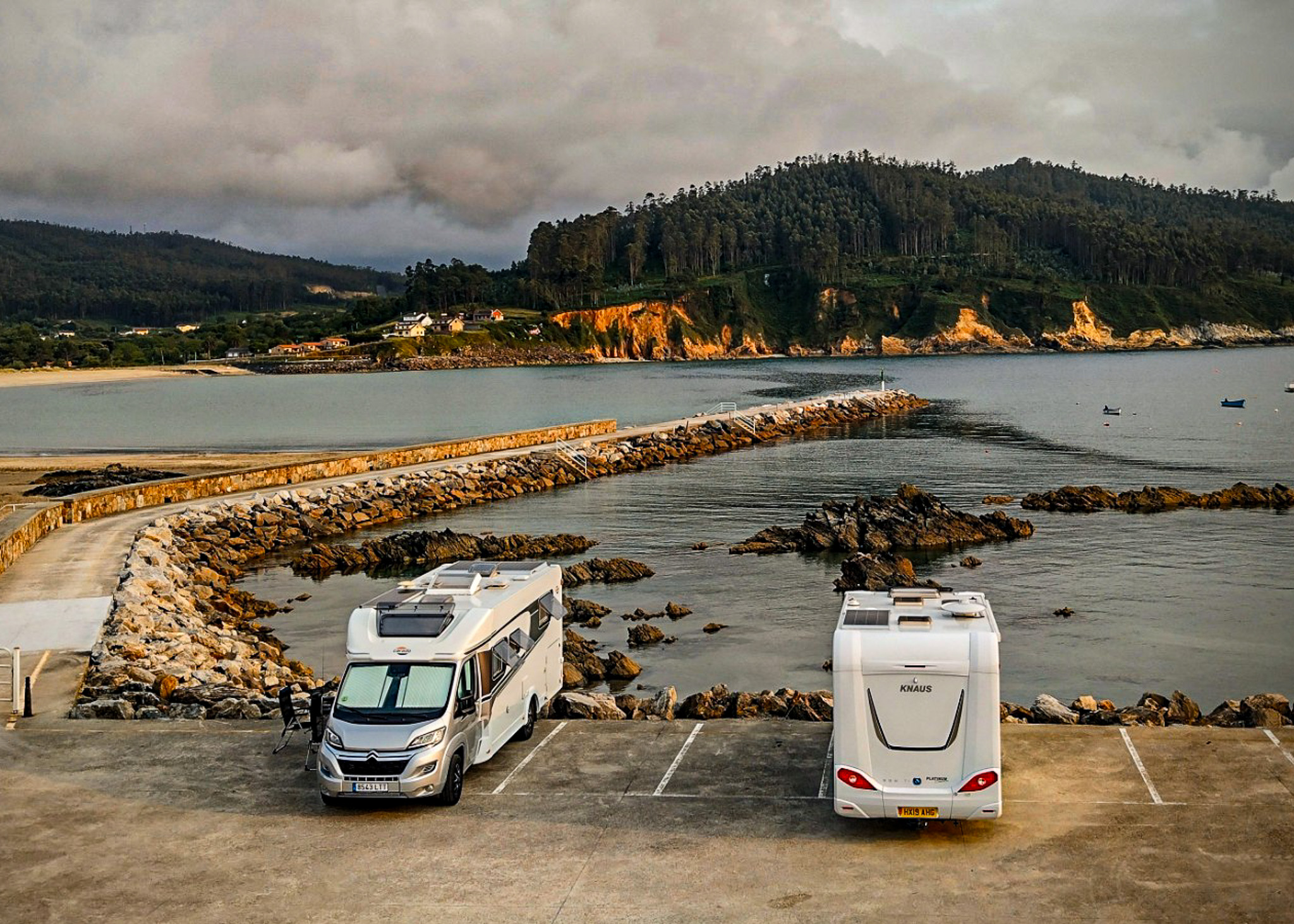The Rias Baixas are a series of river estuaries along the southwest of Galicia, known for its verdant and green coastline which meets sparkling blue waters in rocky coves.
In contrast, the river estuaries are wide and sheltered expanses of bay where fresh water meets sea water, home to a thriving ecosystem of fish, seafood and native and migrating birds.
At Poio’s low tide, the seawater can retreat almost half a mile (800m) leaving fresh and glistening compacted sand across the bays.

Cocking a snook at the Biofranca de Ence paper mill which sits at one side of the Ria de Pontevedra, Simon went for a stroll on a loop of the woods next to where we were staying, near the waters’ edge. Our man in the sun hat writes:
“It was quiet in the bay when I entered the cool shade of the pine and green woodland but when I emerged an hour later, an army of around 150 people equipped with forks, rakes, shovels and baskets was marching out across the sand to the lapping tide.
It was an organised shellfish gathering by the ‘Poio Women of the Sea’, a monthly event when people of all ages can rent equipment to go hunter-gathering at low tide.

At 12 noon, the foragers began returning to the shore as the tide had turned, equipment in one hand, huge and heavy sacks of molluscs in the other.
It was obvious that most people knew what they were doing, but I’m guessing the two hapless women with their nets and sacks entirely tangled, were total newbies. They were calamitously leaving a trail of clams in their wake, every tangled step deposited another shell back onto the sand.
As seagulls feasted on the not-quite escapees, women, men and children returned from the beach, to get their treasure weighed. There was no doubt that one sack would be a lot lighter than it should have been!”

Just around the headland is the Ría de Arousa, the largest of Garlicia’s saline estuaries.
Staying at Vilanova, a small town at the mouth of the Rio Arousa, we saw dozens of enormous refrigerated lorries going in and out of the port, each branded with ‘mariscos’ and a different city name from across the country.
Cycling out to the Illa de Arousa across the 2km bridge, Simon became curious about the many floating rafts he saw on the water. In the evening we watched boats with mechanical arms visit some of the rafts.

We were looking at mussel beds and discovered that there are 3,000 of these ‘bateas’ (floating wooden structures with ropes to grow mussels that look like rafts) and two thirds of them are in the Ría de Arousa, the main production centre.
The fish, and particularly seafood, of the Ría de Arousa are among the finest quality in Europe.
The United Nations Food and Agricultural Organization considers this estuary to have one of the most important deposits of phytoplankton ‘on the planet’, textbook conditions for the development of shellfish. A natural rocky ecosystem ensures tidal water meets fresh river water in perfect moderation.

The Designation of Origin ‘Mexillón de Galicia’ protects the mussels, ensuring they’re cultivated in the traditional way on ropes.
Clams and oysters are also harvested here, along with scallops, queen scallops, razor shells and cockles – but the mussel is king, with 250,000 tonnes collected every year. This accounts for almost half of the 600,000 tonnes consumed in Europe (and GB).
Quite obviously we had to sample some, so while I was working in the heat of the afternoon, Simon was despatched on foot to see what he could find.
Tonight’s dinner wouldn’t even clock up one food mile.








